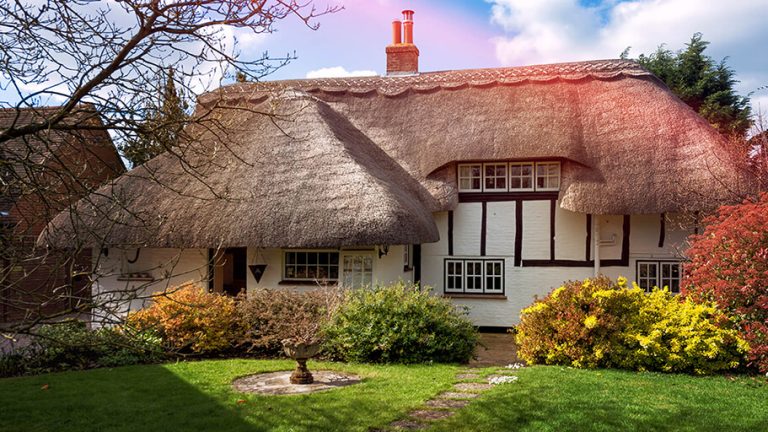There’s no more quintessentially English sight than a chocolate box thatched roof cottage, but owning one of these romantic properties isn’t without its challenges. Today we’re looking at what you can do to look after your thatched roof to prolong its life and reduce the risk of fire.
Maintaining a thatched roof
Although having your roof completely rethatched every few decades is an inevitable part of owning a picturesque thatched house, there are a few things you can do to help keep it in good condition and ensure that it lasts as long as possible. In particular, every ten years or so, you’ll need the ridge of the thatch redone – that’s the bit right at the apex of the roof.
Thatch will lose its condition more quickly if it can’t dry properly after rain, so make sure as much of the roof gets sunlight as possible. This may mean pruning any overhanging trees. Avoid resting ladders against the thatch, as this can shorten its lifespan, and keep an eye on the thatch to watch out for holes developing; although thatch is surprisingly sturdy, holes can still be caused by birds or extreme weather. If you spot any problems, it’s a good idea to get a thatcher in to patch up the roof before the issues worsen.
Protecting your thatched roof from fire
Research shows that the biggest threats posed to thatched roofs are chimney fires and ejected embers, so minimising these risks is paramount. The Thatch Advice Centre recommends burning seasoned wood with a low moisture content, and using firelighters rather than paper to start fires. Ensure you have your chimney swept regularly – not just at the beginning of the season – and invest in a chimney heat monitor and alarm to alert you to the flue becoming too hot and putting the chimney at risk of a fire. There’s more useful advice on reducing the risk of chimney fires here.
There are other preventative measures you can take to keep your thatch safe. It’s possible, for instance, to invest in flame retardant spray for the outside of the thatch. Reapplied every five to seven years, this not only protects the thatch from stray embers, but also from other hazards such as Chinese lanterns or fireworks. Make sure you’re given a certificate showing that your thatch has been treated with this spray, as insurers will often require this.
If your thatch is due to be replaced soon, you might also want to think about having a fire barrier installed underneath it. The idea is that in the event of the thatch catching alight, the fire barrier is there to protect the rest of your property for long enough to allow the emergency services to arrive and put the fire out. You’ll find lots more information about fire barriers here.
Home insurance for thatched properties
Finally, because of the additional risks inherent with thatched properties, they need specialist thatched property insurance. If you’re the proud owner of one of these beautiful homes, request a quote today.

